A Summer Walk Through Strasbourg’s Timeless Beauty
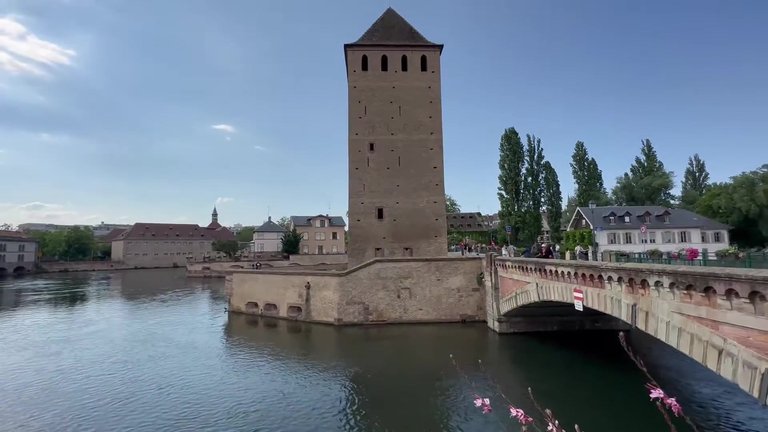
Hello friends. Today I want to tell you about a long walk I took in Strasbourg. I will share with you how this beautiful city looks in the summer. During my walk I visited the city’s most important landmarks. The first place we came across was the Covered bridges, built in the thirteenth century. But then the question arises, where are the covered bridges? Because what we see is simply a stone bridge. In fact in the beginning, they really did have wooden roofs on top. There were five towers, but only four of them have survived to this day. Over time the city’s defense technologies changed. The bridges lost their strategic importance and the towers took on the main defensive function. At first the towers did not even have roofs. They were just watchtowers. Later the wooden roofs on the bridges were removed and replaced with stone structures. That is why they look the way they do today. This place lost its defensive role and became more of a historical monument.


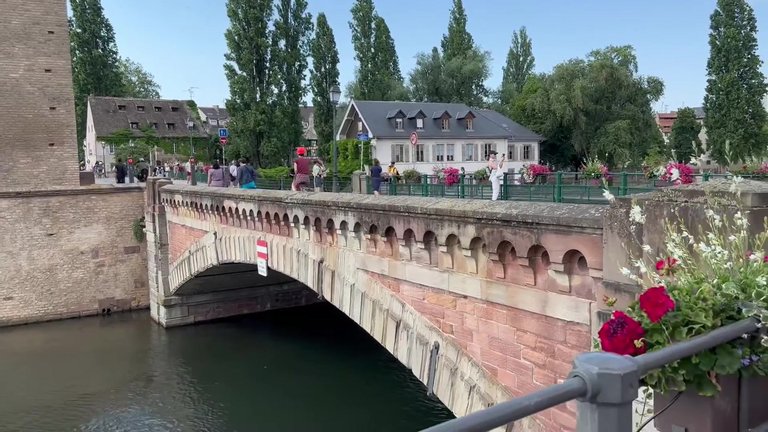
Opposite the bridges, another important structure I saw was the Vauban dam. It was built in the seventeenth century by the architect and military engineer Sébastien Vauban. After Strasbourg became part of France, Vauban constructed many fortifications here. He built around thirty new fortresses from scratch and participated in about three hundred projects. The most striking feature of the dam is that it consists of 13 gates. If necessary the gates could be closed, the water level would rise and the advance of enemies coming from the south was blocked. The land would turn into swamps, making attacks impossible. Today, you can go up to the top of the dam and enjoy a bird’s-eye view of the city, the Covered bridges and the old town.
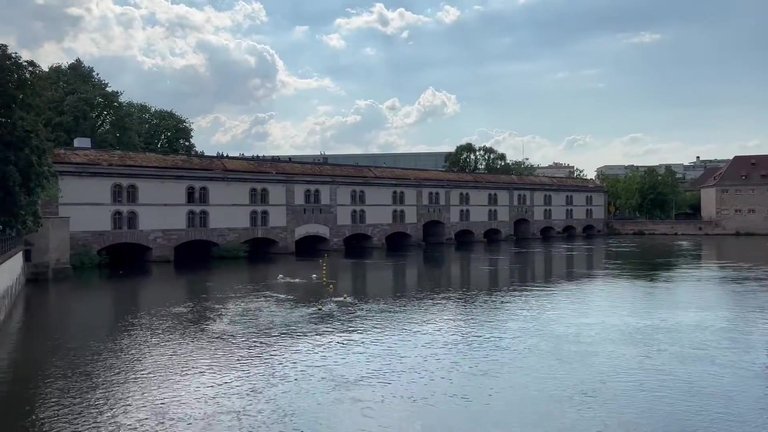
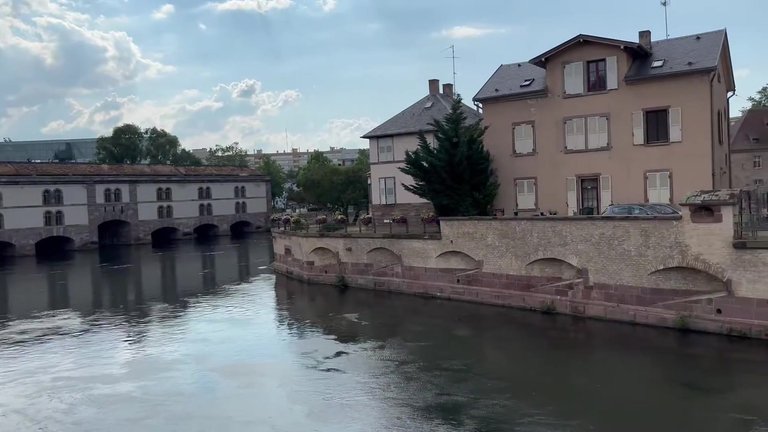
Then we came to the most beautiful spot, Strasbourg’s most charming area, Little France. This place is incredibly beautiful. Balconies full of flowers and carefully arranged landscaping appear everywhere. But the story behind its name is not very innocent. In the old days there used to be a large red-light district here. There was also a hospital for patients with syphilis. Since syphilis was known as the French disease at that time, this district came to be called Little France.
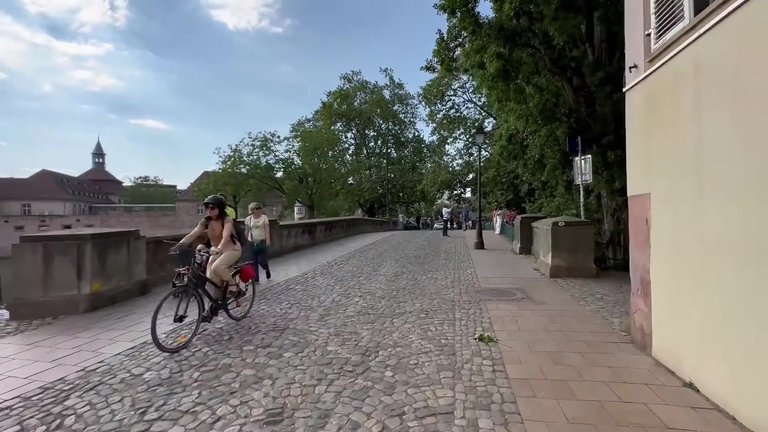
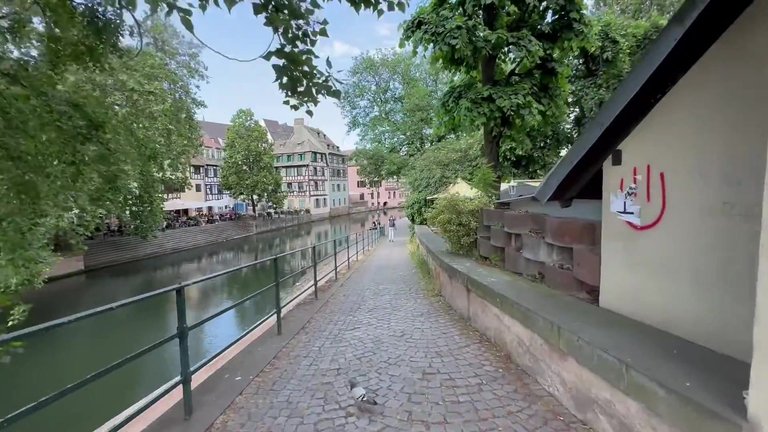
Throughout its history, the city often changed hands. It was originally a German city. Under Louis XIV it became part of France. Later, after the Franco-Prussian War, when France lost, the city passed to Germany. It remained German for about 50 years. When the First World War ended, it returned to France. In 1940, it was once again taken by Germany. But in 1944, at the end of the Second World War, it was permanently restored to France.
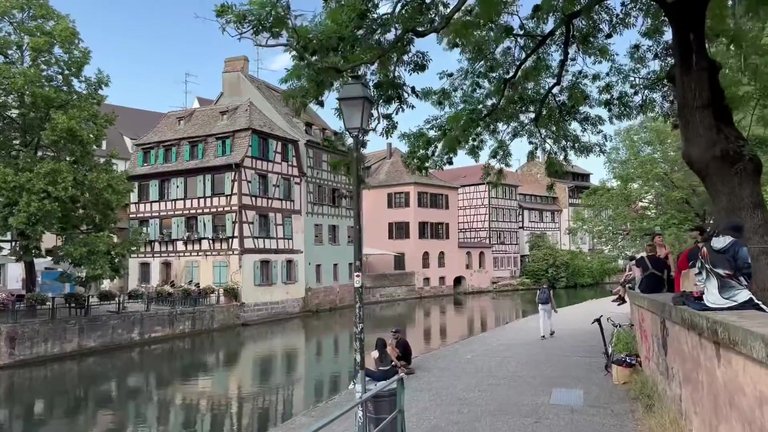
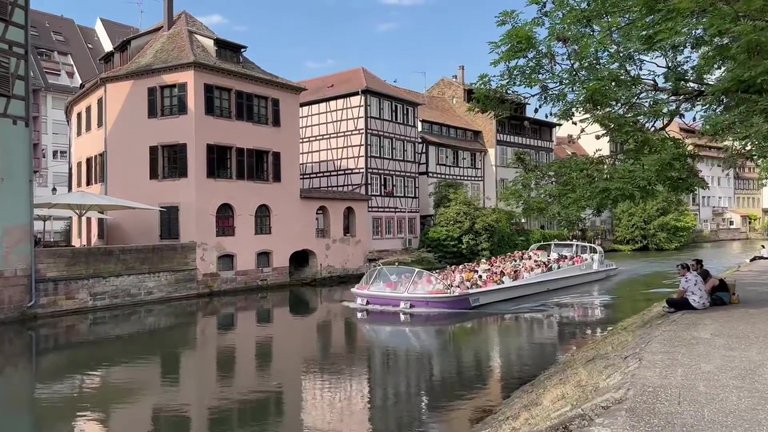
I was amazed by the beauty of the houses around us. The half-timbered or fachwerk style, houses are incredibly impressive. I had seen this style of architecture in a few other cities, but never such a dense and well-preserved example as in Strasbourg. To be honest, in this respect Strasbourg became number one for me. If you want to see this kind of half-timbered architecture, Strasbourg is the place. My God, how beautiful it is. The diversity of colors is stunning. Over there in the distance is a bluish, icy-colored house, next to it one in peach tones, then vanilla and then a real pink. For me, this is an incredibly aesthetic view.
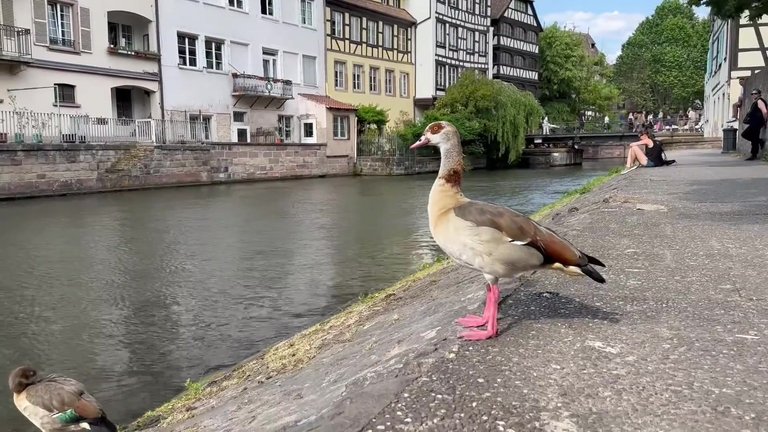
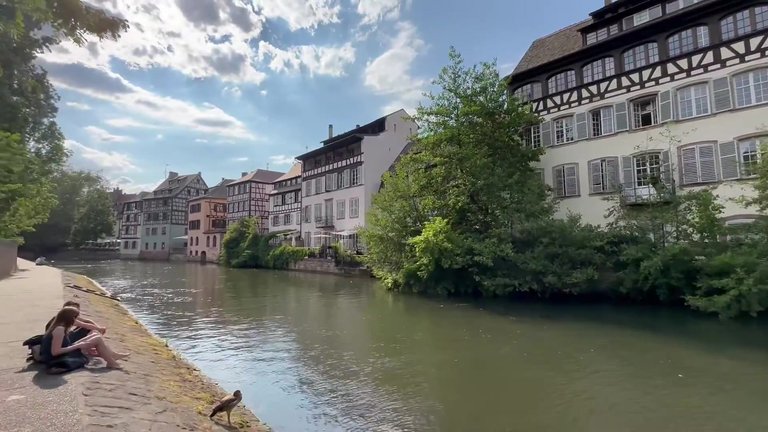
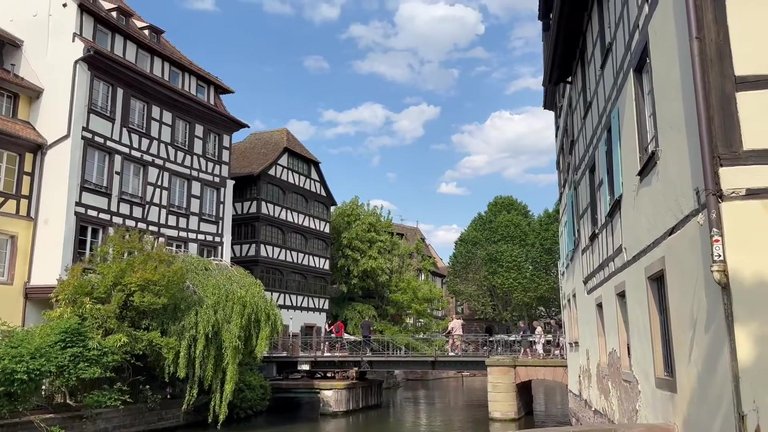
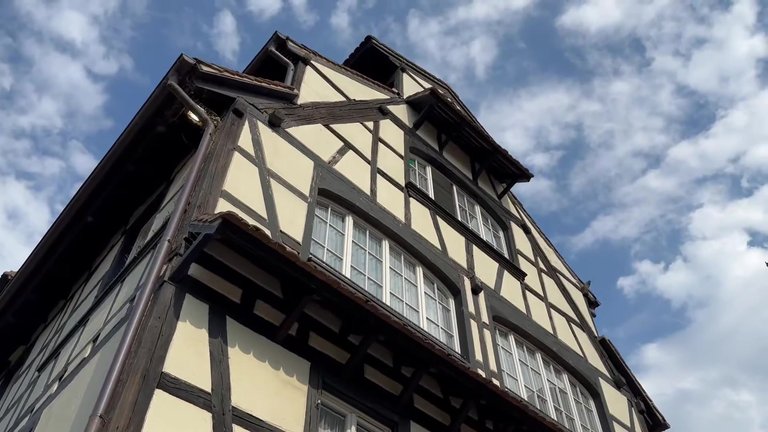
What makes this place even more special are the canals. Especially in the Little France district, it is wonderful to sit by the canals with a baguette or a sandwich, watch the tourist boats passing by and enjoy the silence. It is really peaceful here. Soon after, we crossed over to the city center on the little island.
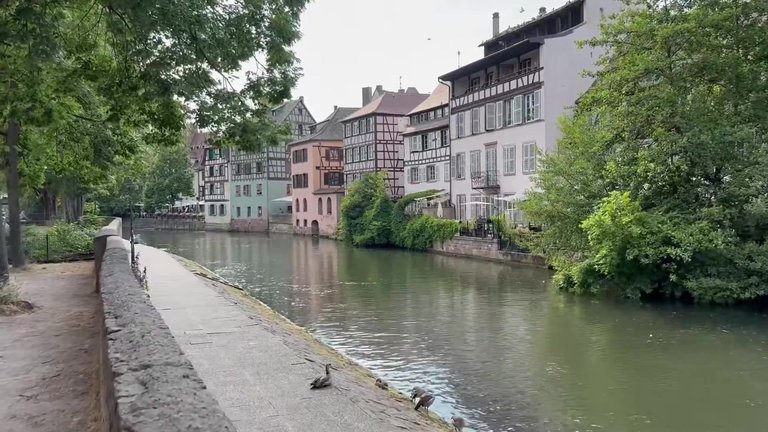
Then we came to a place where leatherwork was once highly developed. Strasbourg, like some other cities, was famous for leather production. A building hidden behind a tree caught our attention. It was built in 1572 and is considered one of the oldest leather workshops in the city. At the top, there is a large terrace where the leather used to be dried. Today an Alsatian cuisine restaurant is located here. Some blogs call it the most beautiful house in Strasbourg. In my opinion, it is not much different from the other beautiful houses nearby, but it is really impressive. Personally, I prefer the houses painted in shades of blue and olive.
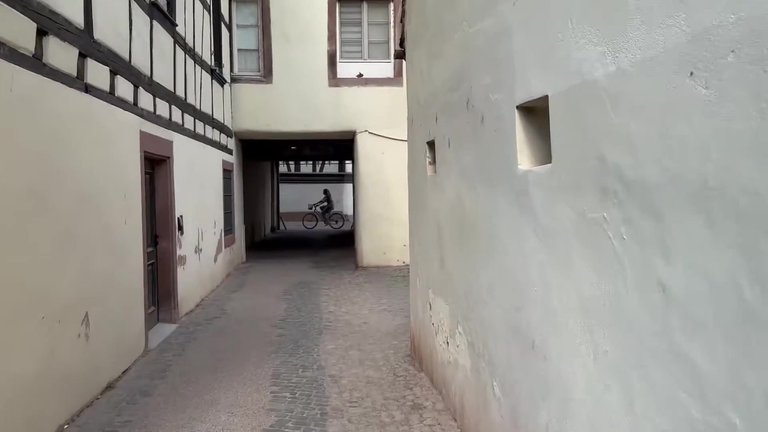
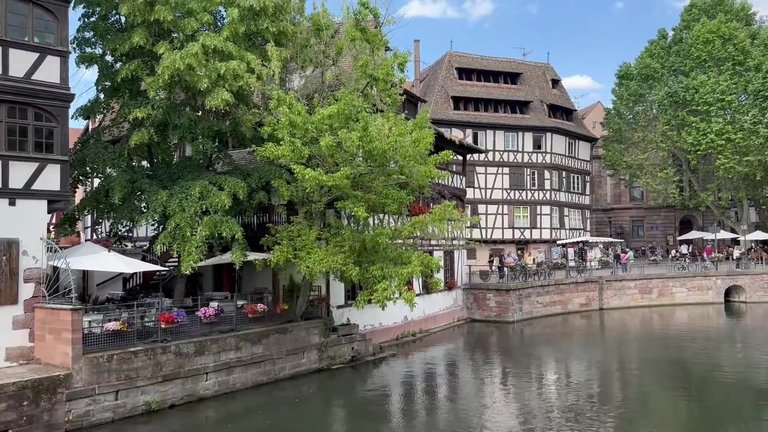
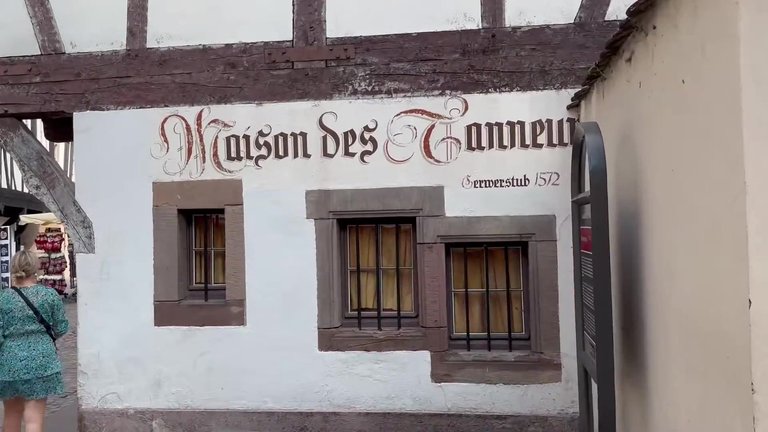
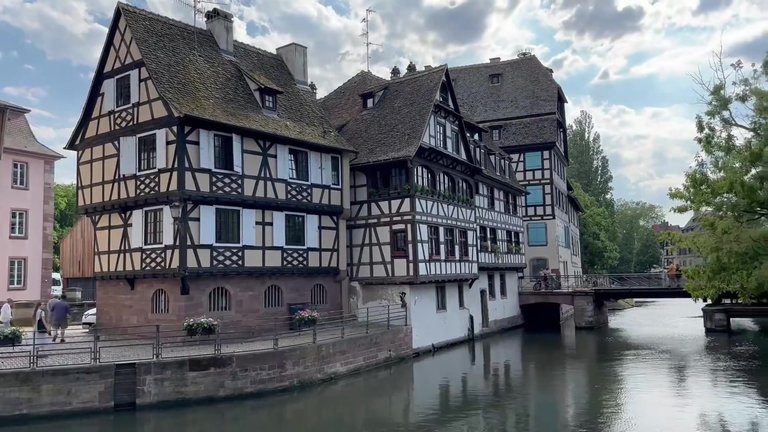
Even while walking this short distance, we hardly saw any cars. The only thing that appeared was a small tourist train carrying visitors. Other than that, there are no vehicles in the center. The center belongs entirely to pedestrians and partly to cyclists. Strasbourg is truly a paradise for cyclists. In the tourist streets, pedestrians have full priority. This makes the city very pleasant.
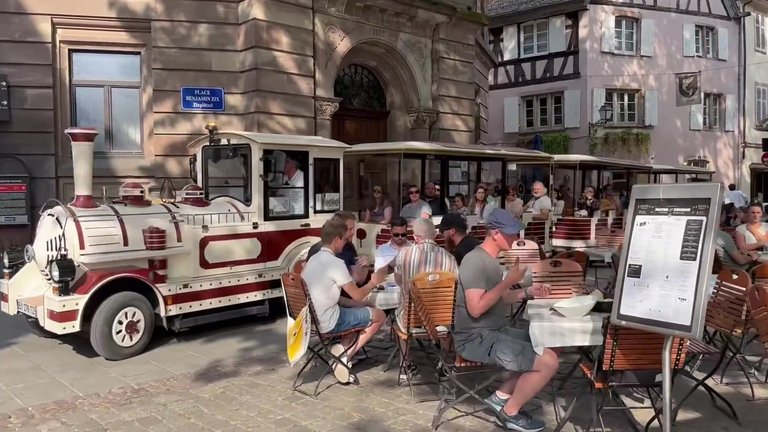
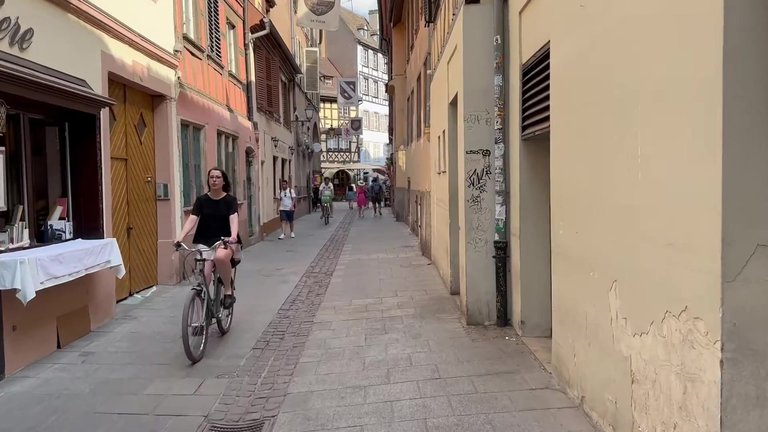
There are coats of arms and decorations on the houses. We entered a quiet courtyard. It is not well-known or touristic, but it shows the true face of Strasbourg. Here too, the facades follow the same style. Flower decorations, decorative lamps that light up in the evenings. The wooden beams holding up the buildings may be 100 to 200 years old.
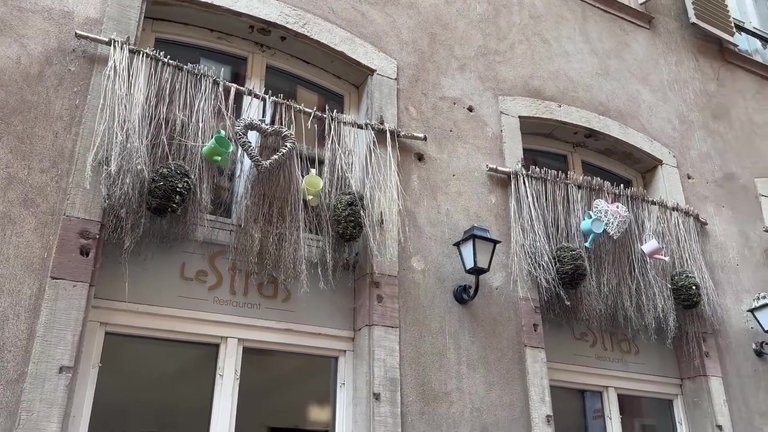
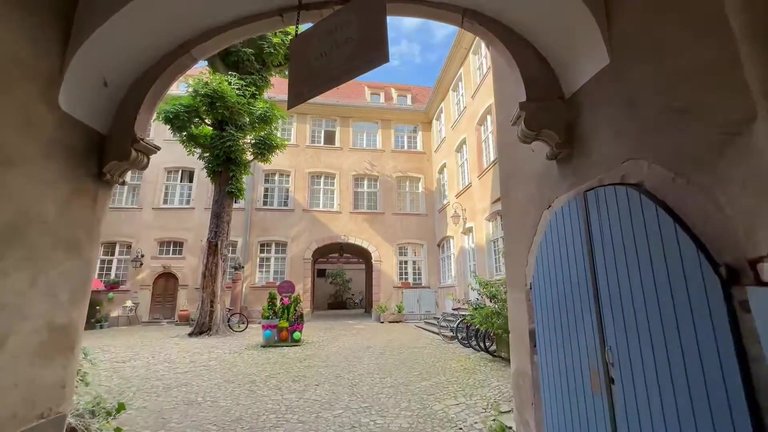
We approached a music school. The special thing was not the school itself, but the bicycle parking area next to it. Here, children and their families come to school by bike. There are no cars in the parking lot, only bicycles. This scene is very beautiful to me. I also saw it in Paris, fathers taking their two daughters to school by bike early in the morning. A lovely sight. It is clear that most of them have cars, but they consciously prefer bicycles.
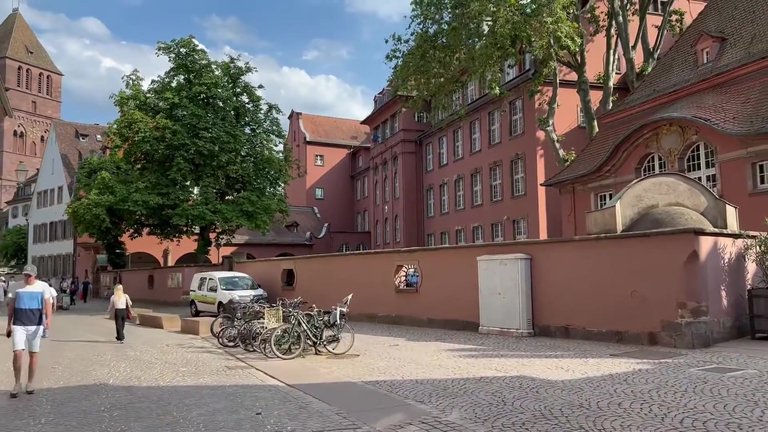
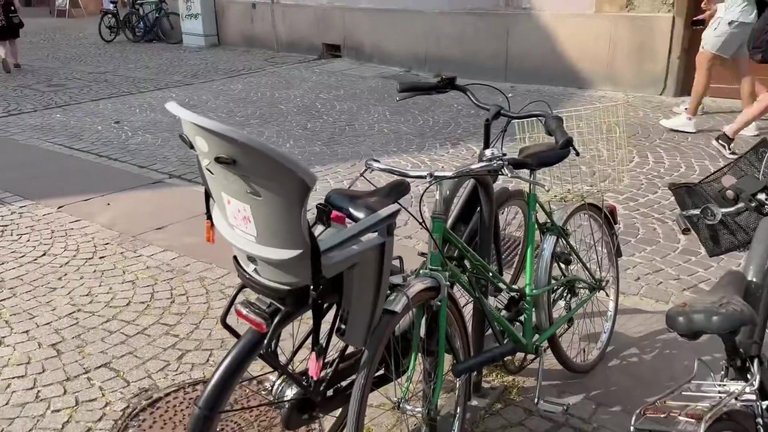
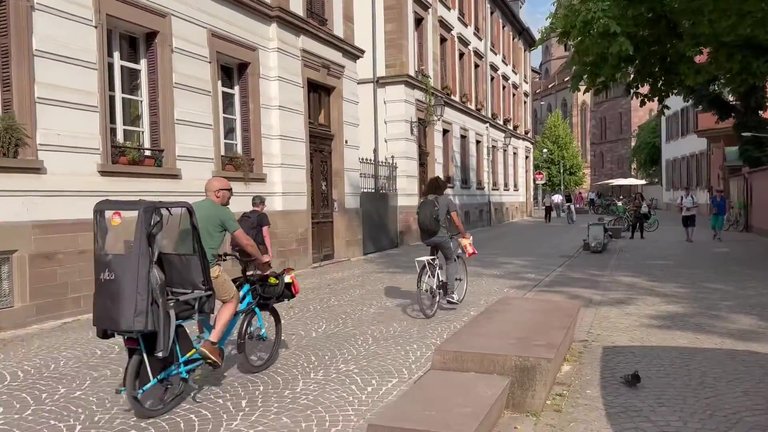
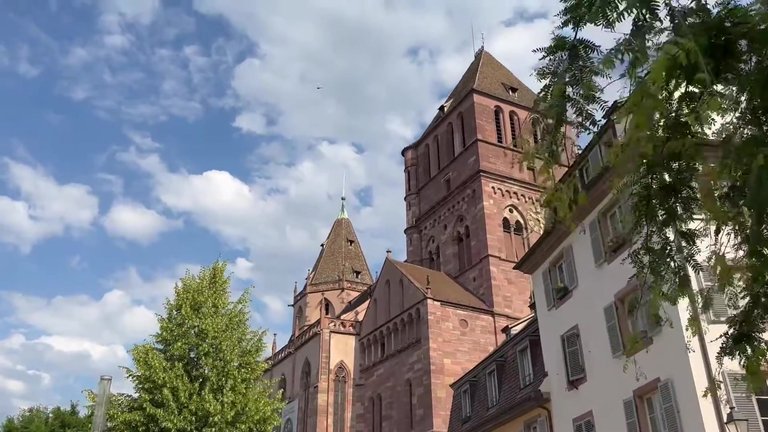

We passed by a large Protestant church with a rich history. It is made of pink sandstone, just like Strasbourg’s main cathedral. The most important feature is the magnificent organ inside. In 1778, Mozart came here, listened to this organ and liked it very much. If it happened today, we would say Mozart liked it, gave it a thumbs up, maybe even shared it.
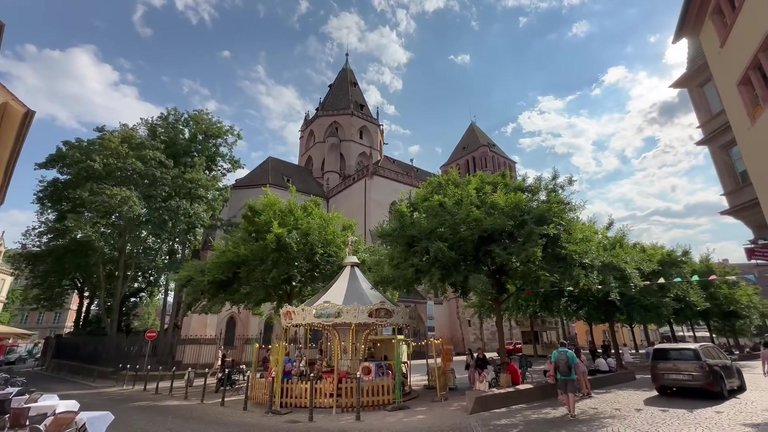
We reached one of the most important streets in the old city center. It was also very quiet. Hardly any cars, only one or two and a tram line. There are six tram lines, named with letters instead of numbers, A, B, C, D and so on. They are very practical, fast and affordable. A single ticket costs 1.8 euros and a 24-hour unlimited ticket is 4.6 euros. I think that is very economical. If you come to Strasbourg, I recommend choosing your hotel along the tram line.
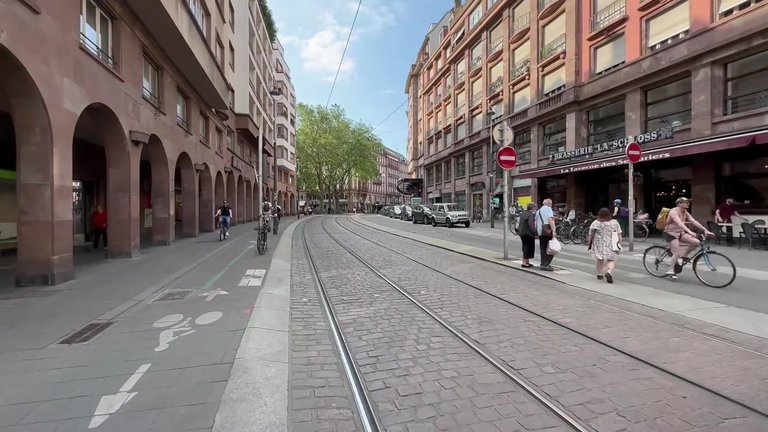
Then we went to Gutenberg Square. Gutenberg did not live in Strasbourg for very long, only about 10 years. But those years were extremely productive. He carried out the fundamental work on the printing press here. Later, he moved to Mainz, continued his work and realized the revolution that changed world history. Today, not many people know, but Strasbourg actually had an important role in the development of the printing press. And Gutenberg was truly a revolutionary, he is the person who made our lives what they are today. Because indeed, the invention of printing, which allowed books to be printed instead of written by hand, was a real revolution. And Strasbourg benefited greatly from this invention. The city became the capital of printing, more than ten printing houses operated here.
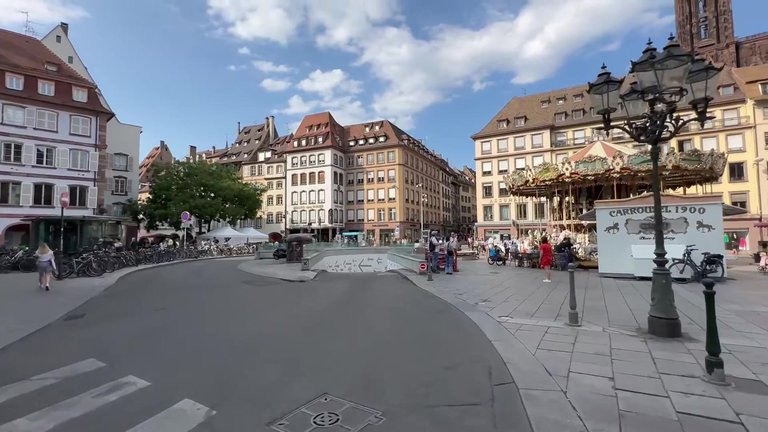
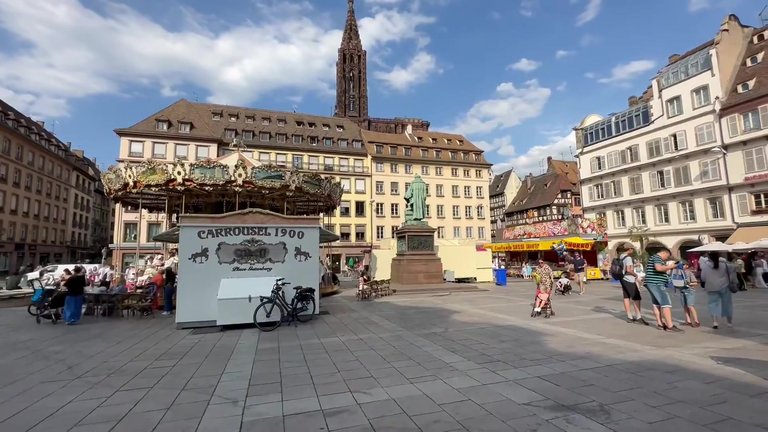
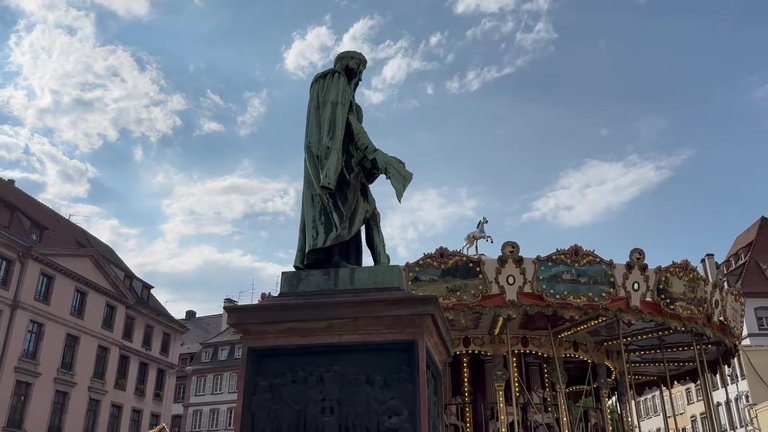
We could also see many bicycles here. Before, there were mostly tram and pedestrian paths, but here there is also a bicycle path. On both sides, many cyclists. The bicycle is a full-fledged means of transportation in the city, especially in the center, but also in the suburbs. Every time I walked around, I saw an incredible number of bicycles and cyclists.
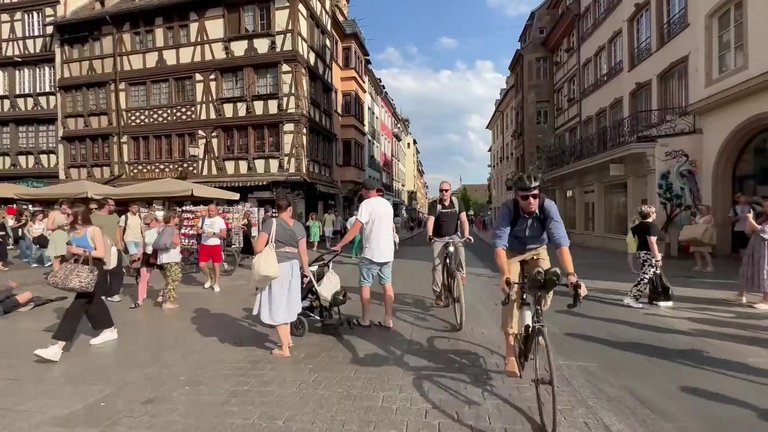
We reached the street leading to the city center. This road took us to Strasbourg’s famous Notre Dame Cathedral. Its height is 142 meters. For two hundred years it was the tallest building in the world. Later, Cologne Cathedral was built and took the record, but 142 meters is still amazing. In fact when I came by bus from Paris, I saw this massive tower while still 20 minutes away from the city. It can be seen from far away. This height is almost one and a half football fields.
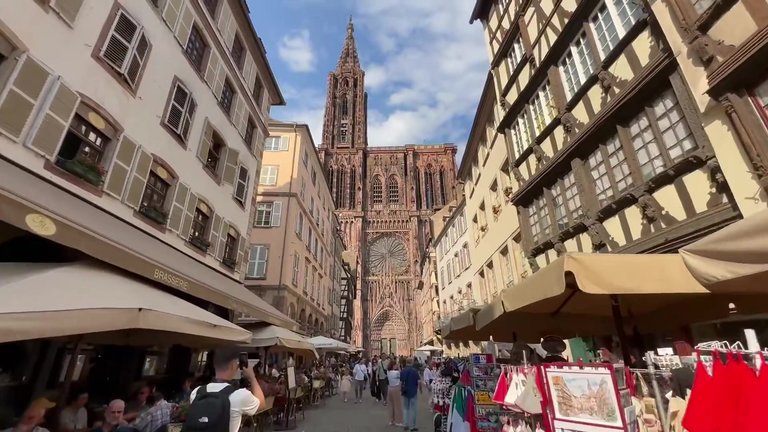
The cathedral is made of pink sandstone and is truly magnificent. I could hear the bells ringing. Believe me, it is impossible not to be impressed by the grandeur of this structure. If you remember, we started our tour at the Vauban Dam. Inside the dam, there is a passage where fragments of the cathedral that were damaged during the Reformation and the French Revolution are displayed. Many decorations were destroyed, the unrecoverable parts were added to this collection.
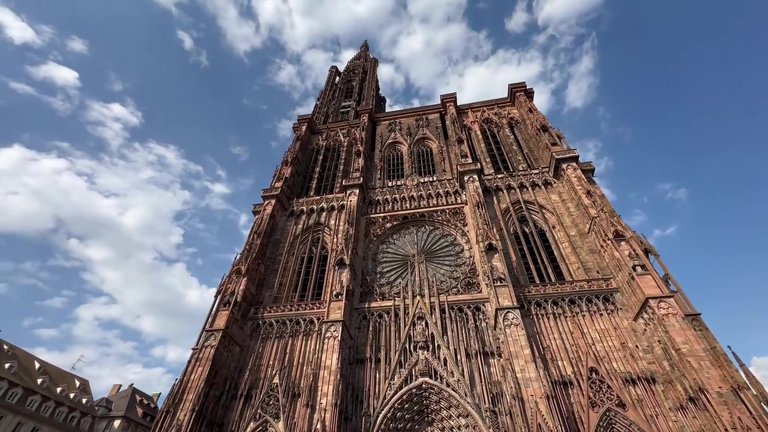
I should also mention the climb up the cathedral. The height is 142 meters, so the climb is tiring but at the same time delightful. Along the way, you reach balconies where you can look out over the city and touch the cathedral’s stone decorations. It is truly a special experience. The entrance fee was 8 euros. From the top, I could see the eastern and western sides, not the north and south, but the view was still breathtaking.
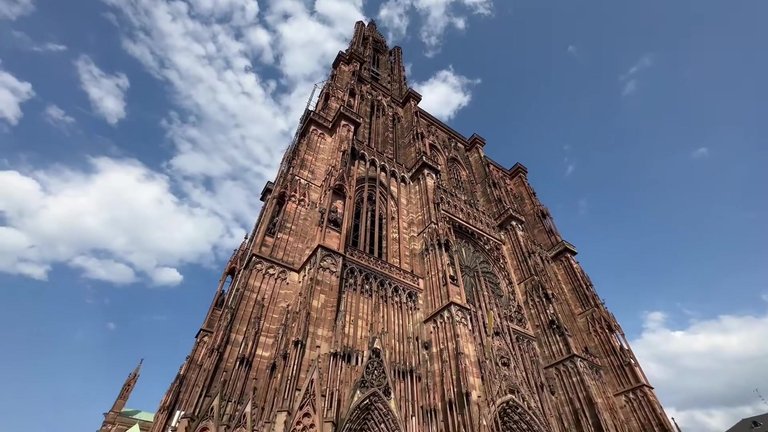
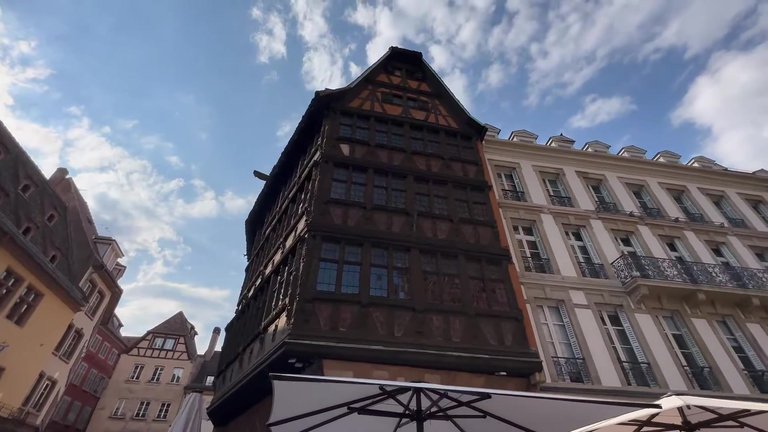
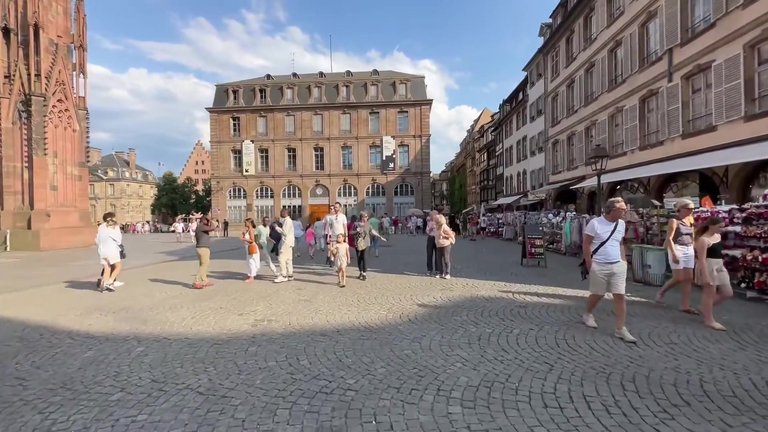
Then I went to the Rohan Palace. There are three important museums there, Archaeology, Decorative Arts and Fine Arts. The palace was built in the mid eighteenth century but was heavily damaged during the bombing of 1944. However, it was fully restored only in the 1990s. Interestingly the same stone used in the cathedral was used in its construction. I could not visit the museums, but the courtyard and architecture of the palace were impressive on their own. In winter the city has a very different atmosphere, mulled wine, the smell of bakeries, Christmas music. In summer though, it is another kind of beauty, green trees, flowers, vibrant colors. Strasbourg is a unique city in both winter and summer.

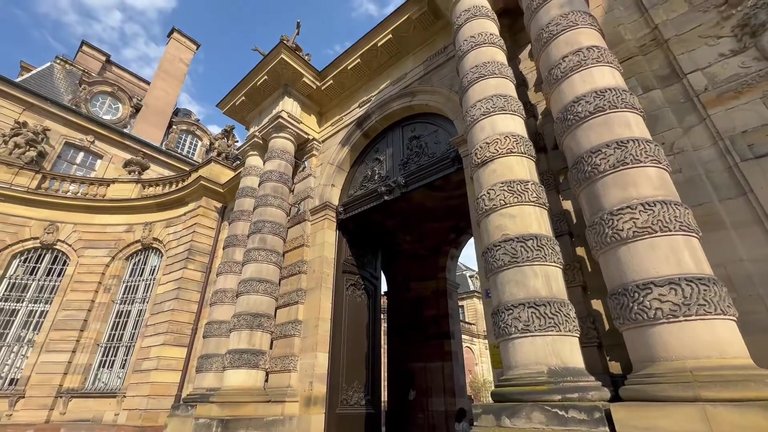
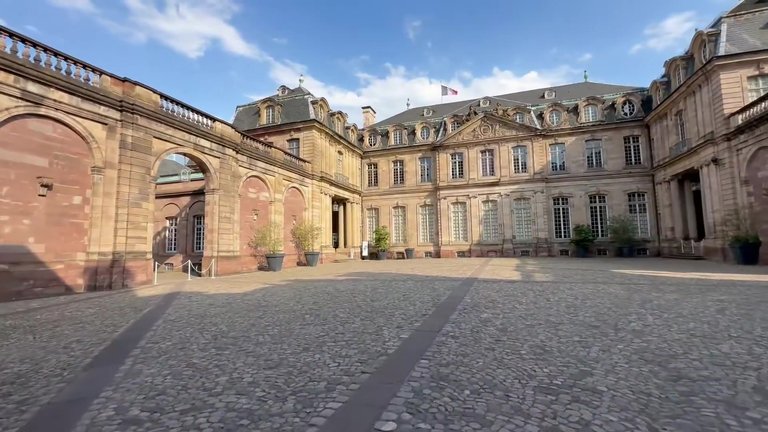
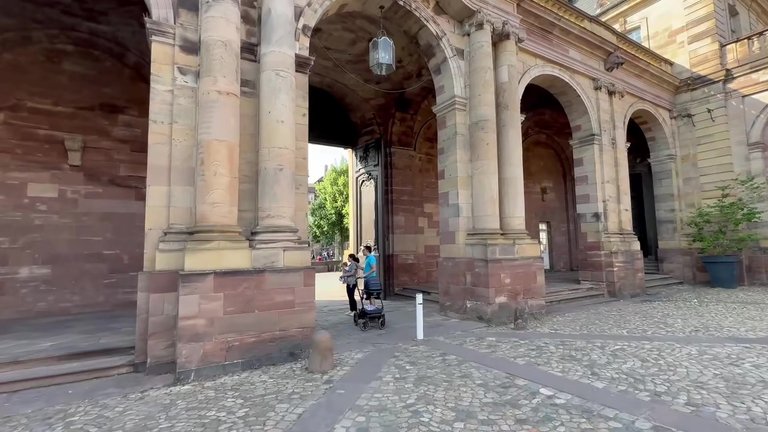
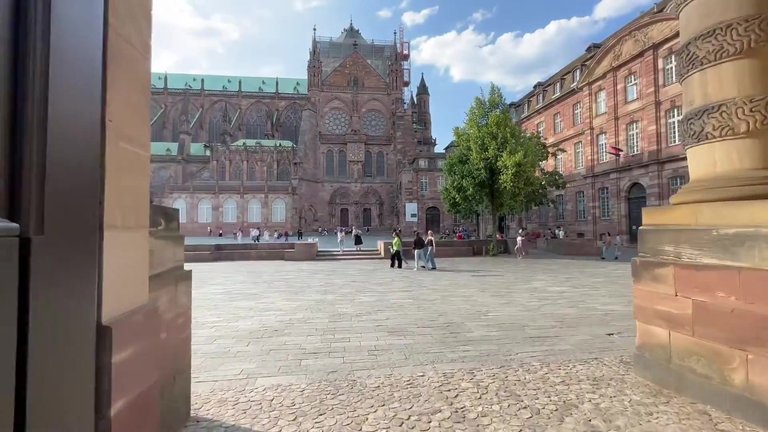
Of course, we only visited the city’s best-known places. If you go further east, you reach the buildings of the European Court of Human Rights and the European Parliament. There are incredibly beautiful neighborhoods in that area. It is impossible to fully describe Strasbourg.
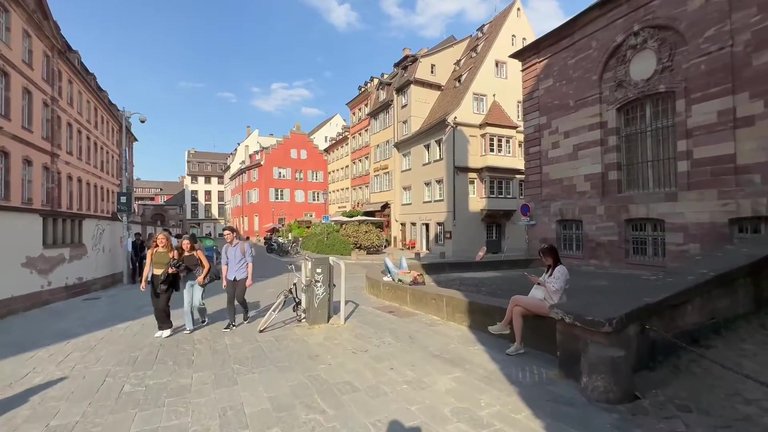
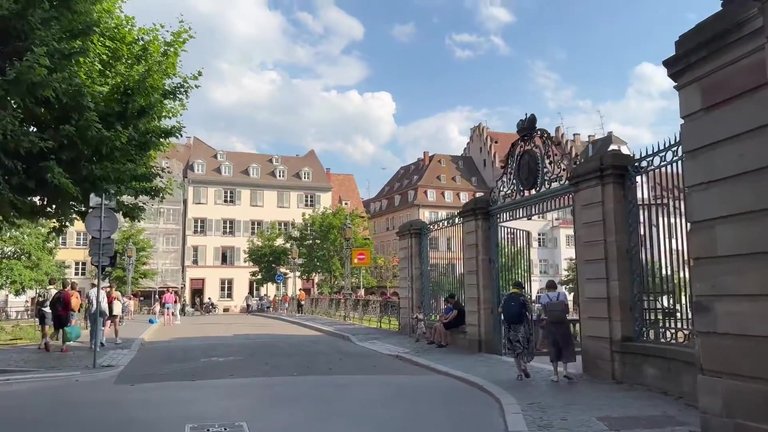
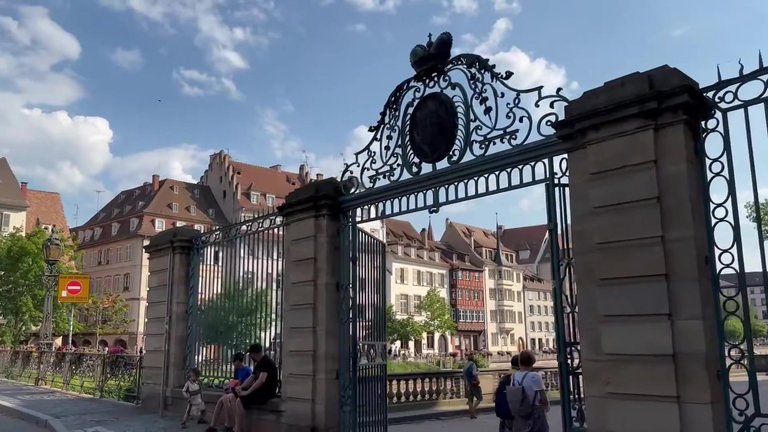
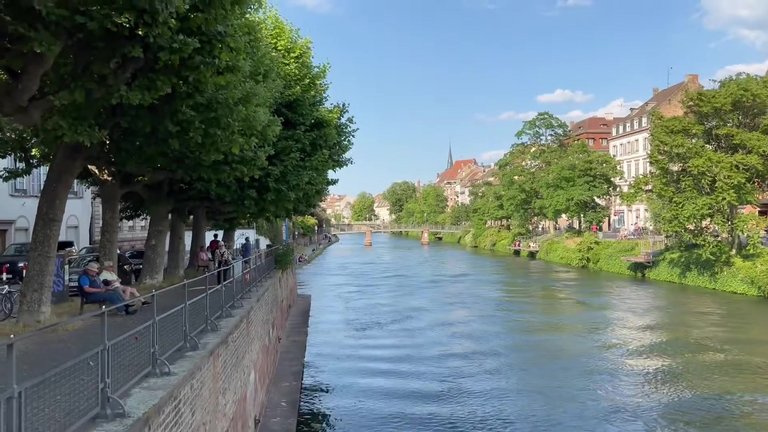
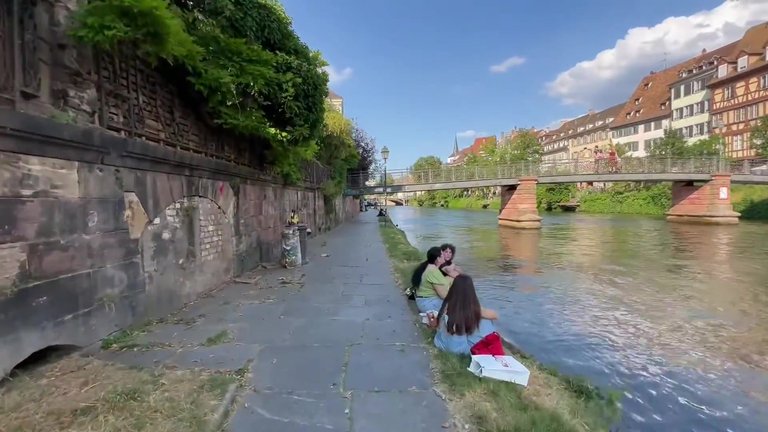
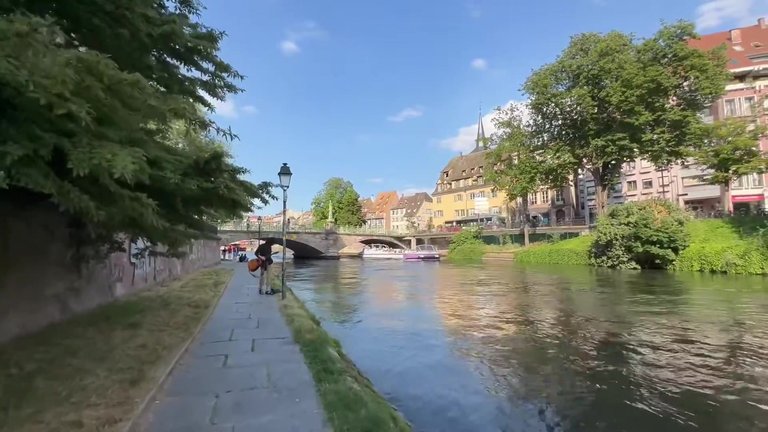
Our journey ended here. Thank for reading friends. See you in the next trips.
You can check out this post and your own profile on the map. Be part of the Worldmappin Community and join our Discord Channel to get in touch with other travelers, ask questions or just be updated on our latest features.
Congratulations, your post has been added to the TravelFeed Map! 🎉🥳🌴
Did you know you have your own profile map?
And every post has their own map too!
Want to have your post on the map too?
- Go to TravelFeed Map
- Click the create pin button
- Drag the marker to where your post should be. Zoom in if needed or use the search bar (top right).
- Copy and paste the generated code in your post (any Hive frontend)
- Or login with Hive Keychain or Hivesigner and click "create post" to post to Hive directly from TravelFeed
- Congrats, your post is now on the map!
PS: You can import your previous Pinmapple posts to the TravelFeed map.Opt Out
Hiya, @ybanezkim26 here, just swinging by to let you know that this post made it into our Top 3 in Travel Digest #2659.
Your post has been manually curated by the @worldmappin team. If you like what we're doing, please drop by to check out all the rest of today's great posts and consider supporting other authors like yourself and us so we can keep the project going!
Become part of our travel community:
Que hermoso recorrido me diste por Estrasburgo 🫶🏻